Having a baby brings much excitement to the parents for sure. But it also bears many responsibilities to make the baby feel at home. As a parent, first-time or not, you must prioritize the clothing needs among other to-dos. We’re here to help you delve into every essential aspect of shopping for baby clothes. Our brief yet insightful guide will explain everything necessary – size, fabric, quantity, cleaning, and safety.
Why You Must Choose Baby Clothes Properly?
Clothing is a fundamental requirement for all humans. But buying clothes for your baby doesn’t exactly follow standard traits. There’s more to keep in mind than fashion, trend, design, and fitting. It’s because baby clothes perform the following functions –
- Avoiding skin irritation and/or sensitivity
- Keeping the baby easy and comfortable
- Protecting from harsh weather conditions
- Balancing or regulating body temperature
Poor clothing will prohibit the little one from relaxing or sleeping due to utter discomfort. At worst, your baby may start suffering from health issues. What you don’t want your baby to have (like – catching cold, visible rash, or sleep deprivation) will surge.
Essential Clothing Items to Buy for Your Baby
When you’re expecting to deliver, it’s better to consider a full-scale baby wardrobe. The following list should give you some insight into the required number of clothes –
- Onesies/Bodysuits: 6 – 10 items
- Infant Gowns: 3 – 6 items
- Bottoms/Pajamas: 6 – 8 items
- Socks/Booties: 6 – 10 pairs
- Jackets/Sweaters: 2 – 4 items
- Hats/Mittens: 1 – 2 pairs
- Tops/Undershirts: 6 – 10 items
- Rompers: 1 – 3 items
- Blanket Sleepwear: 1 – 2 items
The actual number of items may vary, given the climate and laundry requirements. But emphasize the essential clothing like – bodysuits, socks, pajamas, undershirts, and hats.
Sleepwear and Rompers are the least necessary clothes for a baby. You should consider some special outfits when the baby’s supposed to spend considerable outdoor time.
Different Types of Fabric for Baby Clothes
Manufacturers use about 35 different fabric types to produce wearables. But only a few fabrics are universally preferred for baby clothing. The most considerate materials include –
- Cotton – It’s indeed the ideal fabric to ensure comfort, versatility, breathability, and durability. The natural fiber is also highly absorbent. That’s why cotton is a universal choice for warm-weather and moist clothing.
- Synthetic – Polymer clothes are better left alone for babywear. The processed material heavily relies on chemicals. Also, the breathability or air circulation is notably limited. Lack of air and the presence of chemicals can easily trigger skin irritation.
- Rayon – The bamboo fiber is comparatively more breathable, softer, and more absorbent. It further helps babies to remain cool, dry, and comfy. And rayon’s moisture-wicking capability can prevent diaper rashes.
Rayon is the best fabric for babies whereas cotton wearables are readily available. You better avoid even looking into other fabrics since the chances of sensitive reactions are rather high.
However, neither cotton nor rayon can handle the shivering cold during winter. Synthetics (like – fleece) are your only option there. Therefore, proper use of such clothing becomes mandatory.
Additionally, look for organic cotton instead of regular cotton for the baby. Organic cotton is almost free of chemicals and allergens. They also feel gentler and softer on the baby’s skin.
How to Choose the Right Wearable for the Baby?
Buying the right clothes for your little ones isn’t exactly very difficult. Knowing the basics almost covers the task rather well. Still, we would like to remind you of the concerning factors associated with the purchase.
-
Fitting Size
The foremost feature of any wearable comes with the size. And the baby’s physical specs will determine what size of clothing you’ll need. Know the baby’s height and weight and estimate his/her potential growth in months.
-
Occasion
You don’t need anything fancy for regular or at-home uses. But the baby should get a fashionable getup for certain events. And you can consider colorful yet gentle fabric instead of plain white cotton on such occasions.
-
Season
Long sleeves and less breathable clothes are necessary to confront the winter. Short sleeves and higher breathability are requisites for the summer. Also, the changes in everyday weather will need something balanced.
-
Comfort
Avoid tight-fitting clothes to let the air circulate, keeping the skin cool. Sufficient spacing is also crucial to let your baby move around the bones. Get clothes with adjustable features like – buttons/hooks to allow more space.
-
Certification
Baby wearables must remain free of harmful substances. Check for GOTS (Global Organic Textile Standard) or CPC (children’s product certificate) labels. But local standards are also available for which you’re to get the regulations.
A baby (from infants to three years old) spends about 10 to 16 hours a day sleeping. So, it’s in your best interest to ensure a sound sleep. Even when the baby’s awake, you don’t want to make the little ones uncomfortable at all. That’s where proper baby clothing comes into play.
Baby Clothes Size Chart – Age, Weight, Height and Waist
There are different charts available to specify baby clothing sizes. European, American, and several other fitting sizes have been appointed. The distinction primarily lies in the number of sizes and denominators.
The table presented right below contains a standard size chart to justify almost all kinds of baby clothes.
|
Age |
Weight (kg) |
Height (cm) |
Waist (cm) |
|
Preemie |
Up to 3.0 |
About 40 |
Below 40 |
|
Newborn |
3.0 – 3.5 |
42 – 46 |
40 |
|
1 Month |
3.5 – 6.5 |
52 – 56 |
42 |
|
1 – 3 Months |
6.5 – 8.0 |
58 – 64 |
45 |
|
3 – 6 Months |
8.0 – 9.5 |
67 – 70 |
47 |
|
6 – 9 Months |
9.5 – 11.0 |
72 – 76 |
49 |
|
9 – 12 Months |
11.0 – 12.5 |
78 – 82 |
50 |
|
12 – 18 Months |
12.5 – 13.5 |
81 – 86 |
51 |
|
18 – 24 Months |
Over 13.5 |
86 – 92 |
52 |
We, PatPat, hold an extensive collection of premium baby clothes. Style, comfort, quality, design – everything is perfectly blended to match your taste and budget. Clothes are available in skinny (tight fit), regular (standard), and oversized (extra-large) specs. And we use the following size chart –
|
Age |
Size |
Height (cm) |
Weight (kg) |
|
0 – 3 months |
0-3M |
55 – 61 |
4 – 6 |
|
3 – 6 months |
3-6M |
61 – 69 |
6 – 8 |
|
6 – 9 months |
6-9M |
69 – 72 |
8 – 9 |
|
9 – 12 months |
12M |
72 – 77 |
9 – 11 |
|
12 – 18 months |
18M |
77 – 83 |
11 – 13 |
|
18 – 24 months |
24M |
83 – 89 |
13 – 14 |
Please Note that we recognize babies as anyone under 24 months or 2 years of age. When the little one’s age is between 2 years to 6 years, we consider them as kids. And toddlers refer to the 6 – 12 years old.
Matching Cloth Sets with Minimalist Design
Simple designs with clean lines have become a new trend for infant baby clothes. Minimalist outfits may have some subtle details (contrasting pockets) that are timelessly stylish. Solid colors or classic prints (stripes, polka dots) impart a modern outlook.
Family outfit sets gained must popularity by presenting an adorable photo opportunity. It also creates a sense of emotion, familiarity, and unity. Embracing the trend showcases your fashion, style, and taste while making the baby look cute and charming.
Safety First – Don’t Overlook Safety Concerns
Busy parents almost always overlook safety features while buying clothes for their babies. Millions of wearables are recalled every year due to this reason alone. Failure to comply with safety standards is something to be realized sooner than later.
- Don’t get clothing with unnecessary decorations with sharp, loose, small details. Avoid buttons, flowers, bows, hooks.
- Obligatory features like hooks and/or buttons must remain attached firmly. Neither they can have any sharp details.
- Don’t go for clothes with waistbands and drawstrings. Also, you may want to check out the fire-resistant sleepwear.
‘No loose ends’ is what these decorative items are all about. Babies will start to crawl everything, from clothes to appliances, upon reaching 9 to 14 months of age. So, anything ingestible must be handled and stored with the utmost care at that time.
Clothing Tricks for Your Baby to Prevent SIDS
SIDS (sudden infant death syndrome) is exactly what it sounds, scary and tragic to take away your sleep. It rarely occurs but nobody would take any chance, would they? Appropriate wearables can help your baby from such occurrences.
- Skip too-loose or drawstring items to avoid choking hazards.
- Purchase snug-fitting sleepwear to reduce suffocation risks.
- Clothing layers must eliminate the eventual overheating of skin.
- Get sleep sacks instead of blankets to retain internal warmth.
How to Take Care of Your Baby Clothes?
Cautious, regular, and thorough cleaning is also a must-do to maintain the clothes’ usability. The general approach consists of the following steps –
- Reading/knowing the full washing instructions for the clothes.
- Proper cleaning of the purchased clothes before putting into use.
- Use of natural cleaners (vinegar/baking soda) to confront stains.
- Avoid overloading of washing machine with too many clothes.
- Enable complete air drying for the wet wearables before folding.
A clean and fresh cloth is inevitable to maintain softness and comfiness for the baby. It may also extend the fabric’s life expectancy for future donation/use.
Wrapping Up
We wholeheartedly congratulate you on welcoming a new family member. Embarking the journey of nurturing the little fellow is wonderful and exciting for sure. Investing in the proper newborn baby clothes is an essential element of that experience. Choosing the proper baby wearables through our ultimate guide can certainly pump up your little one’s overall well-being.


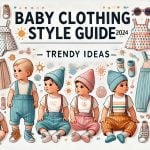

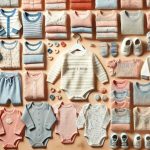

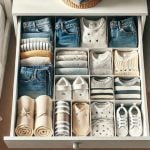


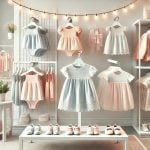
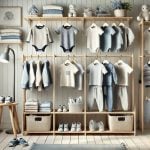





Leave a Reply